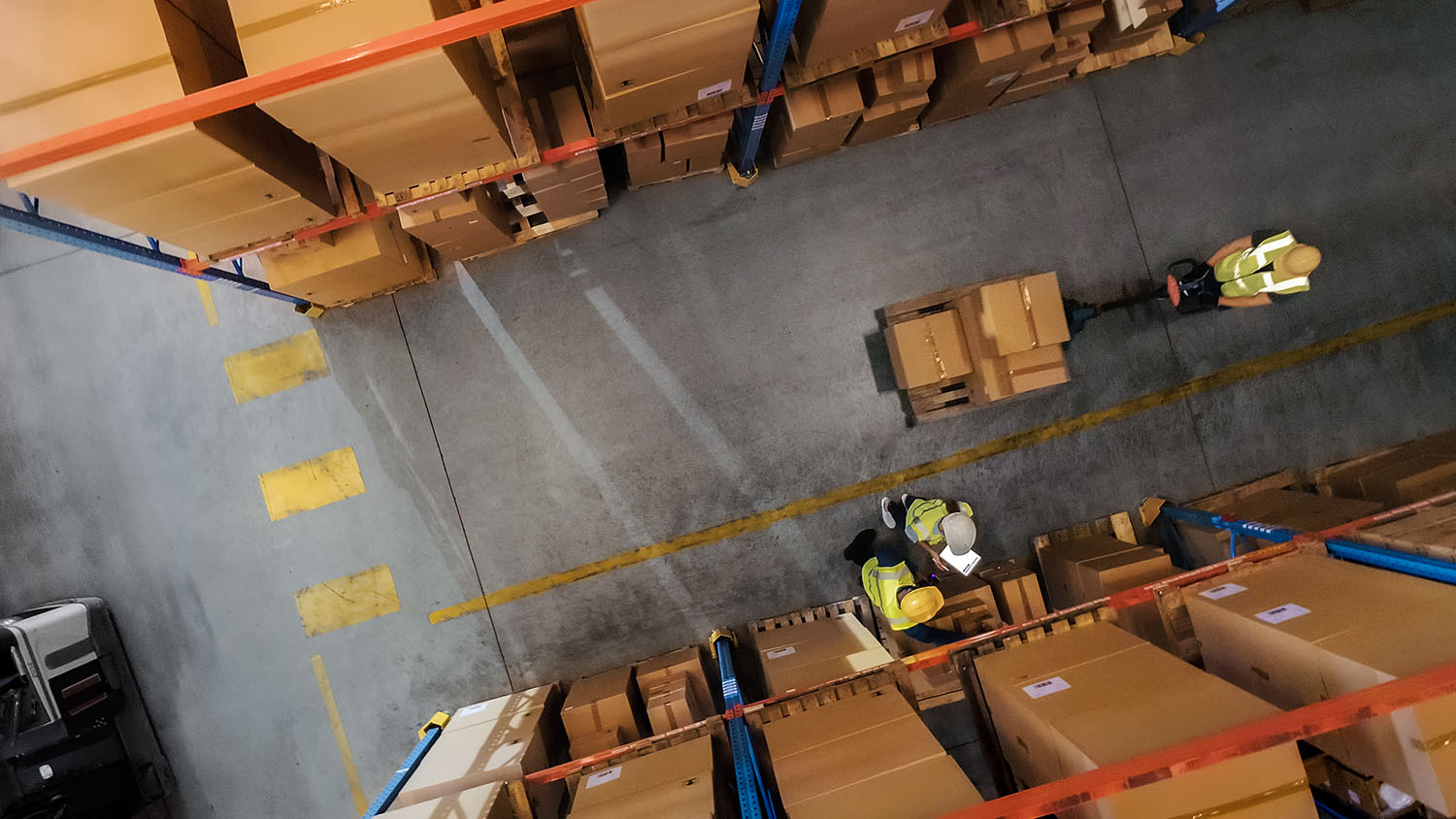Supply chains in the U.S. have gone through dramatic shifts and businesses are quickly realizing they need to adapt to industry changes and stay ahead of the curve. Amazon’s recent $1 billion investment into warehouse technologies is a clear indication that the industry is looking toward innovative and capable solutions.
Warehouses or distribution centers not meeting the needs of their customers or the marketplace can come down to inadequate technology. As demands increase and supply chains evolve, warehouses need powerful, comprehensive and connected systems that manage the entire warehouse from end-to-end.
In the many moving parts of the warehouse, human labor is the key factor that drives order efficiency. A labor management system is designed to help to make warehouses more successful and profitable.
In this article, we’ll look at the benefits and features of a Labor Management System (LMS). But first, let’s discuss what an LMS is.
What Is a Labor Management System?
A Labor Management System (LMS) is a software solution designed to optimize workforce performance and productivity within an organization.
In the context of warehouses, an LMS keeps an eye on things like how long tasks take, how productive employees are, and whether operational standards are being met.
It collects and analyzes this data, giving managers clear, actionable insights to make smarter decisions.
Plus, when it’s connected to a Warehouse Management System (WMS), it can provide real-time updates to reduce downtime, keep workflows running smoothly and efficiently.
Simply put, an LMS is like a coach for your workforce. It helps managers spot what’s working, where improvements are needed, and how to train employees to be their best—all while making day-to-day operations easier to handle.
5 Labor Management System Benefits
1. Greater Fulfillment Accuracy
A Labor Management System enables warehouses to assign tasks, track fulfillment stages, and give all team members—from forklift operators to supervisors—visibility into required procedures. This shared visibility helps maintain order accuracy and accountability.
By tracking employee tasks and movements, managers can identify errors in the order process, improving quality assurance and fulfillment accuracy. Clear task assignment reduces human error, double-handling, wasted time, and missed dispatch cut-off times.
2. Improved Customer Satisfaction
Customers expect correct orders and fast fulfillment; anything less than that will adversely affect their loyalty and your reputation, ability to grow, and profitability. By collecting and tracking labor data, an LMS is able to better forecast and predict order completion so that customers receive their orders on time, no matter how busy your warehouse is. Your LMS will ensure order accuracy and efficiency at every stage, helping to provide a dependable service that customers can rely on.
3. Better Employee Satisfaction
A Labor Management System (LMS) sets fair performance targets and gives employees clear expectations and ownership of their roles. It eliminates confusion, lack of direction, and accountability to create a more engaged workforce.
The LMS tracks daily performance and enables incentive programs that boost productivity and satisfaction. These improvements help warehouses address recruitment and retention challenges effectively.
4. Greater Productivity and Efficiency
Labor drives efficient operations. Productive employees and high throughput enable businesses to remain profitable and grow.
An LMS analyzes workforce performance by tracking activity data and reporting on productivity at individual and team levels. It simplifies complex variables such as shifting demands, task types, equipment, and product locations. This visibility delivers actionable insights that set warehouse teams up for success.
5. Improved Management Decisions
An LMS provides real-time insights that help managers reallocate resources and adjust workflows to maintain productivity and control costs. It also helps identify inefficiencies, minimize time waste, and forecast labor needs based on seasonal and market changes.
Key Features of a Labor Management System
An LMS provides businesses with powerful capabilities to meet their unique labor challenges, from enhancing efficiency to ensuring compliance. Here’s a closer look at its key features:
1. Time and Attendance Tracking
Keep track of every single employee’s working hours, breaks taken and extra hours worked with precision, removing the burden of tracking hours (and mistakes) manually and abiding with labor laws.
By using automated systems, employers can cut down on the time they spend on payroll management and investigate and discuss patterns of attendance and absences, making their team more responsible and effective.
2. Workforce Scheduling
Create smart schedules that match the right people to the right tasks. With an LMS, you can set up shifts automatically based on your team’s availability, skills, and workload. It saves time, avoids conflicts, and makes sure you’re always properly staffed—even during busy periods.
3. Performance Monitoring and Analytics
See how your team is doing at a glance. An LMS tracks productivity and compares it to goals, so you know who’s crushing it and where improvements are needed. With simple reports and insights, you can make better decisions and keep your team working at their best.
4. Task Assignment and Real-Time Monitoring
Make sure everyone knows what to do and stays on track. Assign tasks directly through the system and follow progress in real time. If something’s running behind, you’ll know right away and can adjust to keep everything moving smoothly.
5. Labor Forecasting and Budgeting
Plan ahead with confidence. An LMS uses past data to predict how many workers you’ll need and when. It helps you avoid overstaffing or understaffing while keeping labor costs in check.
6. Compliance Management
Labor laws can be tricky to navigate, but staying compliant doesn’t have to be a constant worry. A good LMS keeps track of all the details—like overtime hours, proper breaks, and scheduling rules—so you don’t have to. It helps you avoid mistakes and shows your team that you’re running a fair and trustworthy operation.
7. Integrated Reporting and Insights
Know exactly how your team is performing and where improvements are needed. An LMS pulls all your labor data into one place and turns it into clear, actionable reports.
You can quickly spot patterns, identify problems, and make smarter decisions. It’s like having a dashboard for workforce success—always up-to-date and easy to use.
8. Seamless Integration with Warehouse Management Systems (WMS)
When your LMS and WMS work together, everything runs more smoothly. This integration ties your workforce data directly to inventory and operations, making sure everyone and everything is in sync.
The result? Fewer mistakes, faster processes, and a warehouse that operates like a well-oiled machine.
Streamline Your Warehouse Operations with Smarter Labor Management
A Labor Management System (LMS) is essential for optimizing workforce efficiency, ensuring compliance, and reducing costs.
Da Vinci’s LMS module goes a step beyond, however. Built into our Warehouse Management System (WMS), it integrates workforce data with operational workflows and enables real-time insights, automated processes, and a wider path to achieving productivity goals.
Want to see the difference a smarter LMS can make? Talk to our team today about how Da Vinci’s LMS module can help you.



